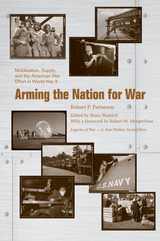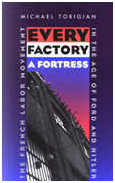
needs of soldiers on the battlefield. He was thus dismayed by America’s lack of military
preparedness when a second great war engulfed Europe in 1939–40. With the international
crisis worsening, Patterson even resumed military training—as a forty-nine-yearold
private—before being named assistant secretary of war in July 1940. That appointment
set the stage for Patterson’s central role in the country’s massive mobilization and
supply effort which helped the Allies win World War II.
In Arming the Nation for War, a previously unpublished account long buried among
the late author’s papers and originally marked confidential, Patterson describes the vast
challenges the United States faced as it had to equip, in a desperately short time, a fighting
force capable of confronting a formidable enemy. Brimming with data and detail, the book
also abounds with deep insights into the myriad problems encountered on the domestic
mobilization front—including the sometimes divergent interests of wartime planners and
industrial leaders—along with the logistical difficulties of supplying far-flung theaters of
war with everything from ships, planes, and tanks to food and medicine. Determined to
remind his contemporaries of how narrow the Allied margin of victory was and that the
war’s lessons not be forgotten, Patterson clearly intended the manuscript (which he wrote
between 1945 and ’47, when he was President Truman’s secretary of war) to contribute
to the postwar debates on the future of the military establishment. That passage of the
National Security Act of 1947, to which Patterson was a key contributor, answered many of
his concerns may explain why he never published the book during his lifetime.
A unique document offering an insider’s view of a watershed historical moment, Patterson’s
text is complemented by editor Brian Waddell’s extensive introduction and notes.
In addition, Robert M. Morgenthau, former Manhattan district attorney and a protégé of
Patterson’s for four years prior to the latter’s death in a 1952 plane crash, offers a heartfelt
remembrance of a man the New York Herald-Tribune called “an example of the public-spirited
citizen.”


French trade unions played a historical role in the 1930s quite unlike that of any other labor movement. Against a backdrop of social unrest, parliamentary crisis, and impending world war, industrial unionists in the great metal-fabricating plants of the Paris Region carried out a series of street mobilizations, factory occupations, and general strikes that were virtually unique in Western history.
The unionization of the metal industry, following a series of anti-fascist demonstrations and plant seizures, would constitute the defining episode in modern French labor history and one of the great chapters in European social history. Yet little is known of these extraordinary events.
With a style that captures the vivid character of these experiences, Every Factory a Fortress tells the story of the Paris metal workers, who succeeded in organizing the largest Communist union in the Western world, reshaping the parameters of French social relations, and, ultimately, altering the course of French destinies.

READERS
Browse our collection.
PUBLISHERS
See BiblioVault's publisher services.
STUDENT SERVICES
Files for college accessibility offices.
UChicago Accessibility Resources
home | accessibility | search | about | contact us
BiblioVault ® 2001 - 2024
The University of Chicago Press









